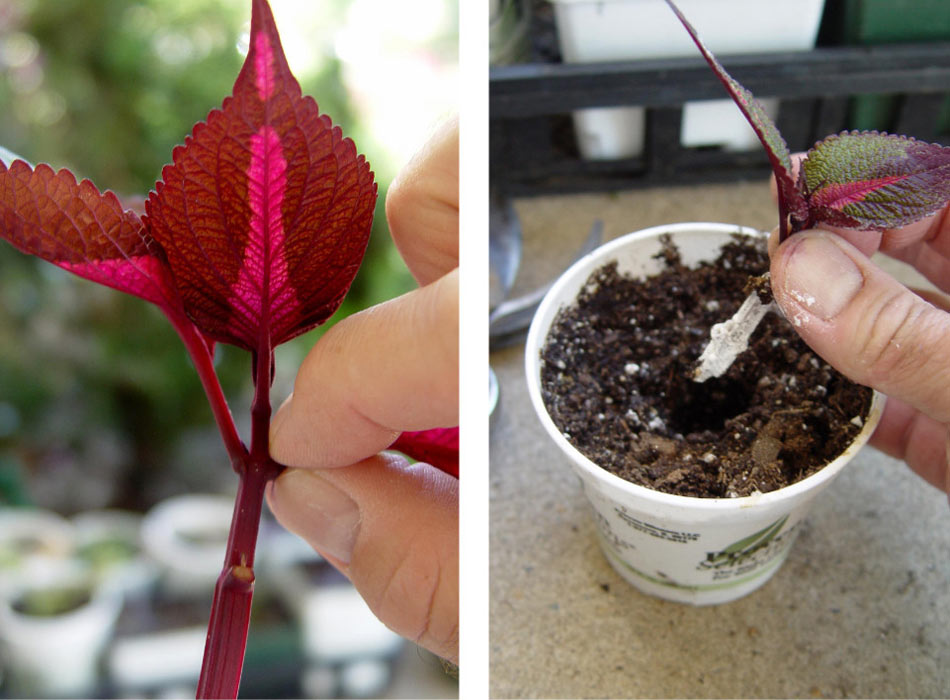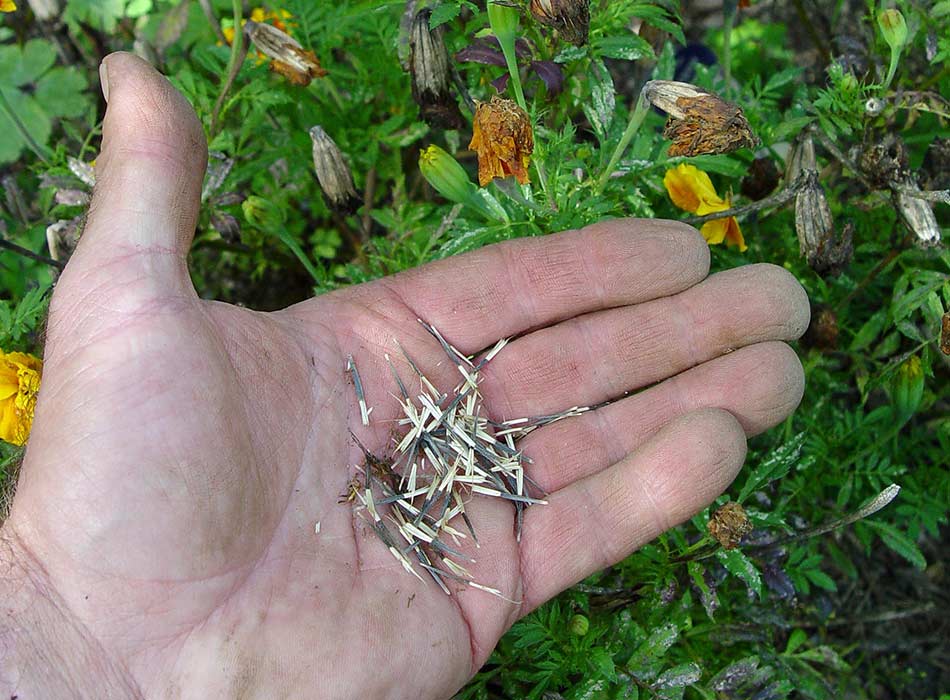Making Sense of Seeds
Shopping for seeds can be confusing. Not sure what different terms on your seed packs mean? Read this article to learn more.

New rooted cuttings are made by pinching leaves off branch tips and planting the bottom sections in potting mix. George Weigel
Early fall is a good time to salvage plants for another year that you grew and liked in your yard this year.
Many plants offer one and/or two ways to do that, and both are free or very low cost. One way is gathering mature seeds and saving them to plant again next year. The other is starting new plants from cuttings taken from the tips of existing plants.

These are seeds being collected from dried marigold flowers in fall. George Weigel
Seed-collecting works only for plants that produce viable seed (some plants are sterile) and mainly for plants that are “open-pollinated,” i.e. ones that will produce new plants very similar to this year’s. So many of today’s flowers are hybrids that growers produce by mixing the pollen of two different parents. The seed of that offspring usually produces traits of one of the parents, not a true copy of the plant you have.
With viable, open-pollinated seed, the key is collecting seeds that have matured. Let them dry on the plants, then clip them before they drop. Let the collected seeds air-dry for a week or two before storing them in small envelopes, ideally inside a jar stored inside a refrigerator.
Bachelor’s buttons, cleome, columbine, cosmos, coneflowers, larkspur, marigolds, purple hyacinth beans, sunflowers, sweet peas, and zinnias are some of the easiest flowers to grow from saved seed. Tomatoes, peppers, peas, lettuce, and green beans are some of the easiest-to-save vegetables.
The second method is taking “cuttings.” This is the preferred method for trees, shrubs, and tropicals, but it also works with a surprising number of perennial and annual flowers.
Cuttings are four- to six-inch pieces clipped off the tips of plant branches. Pinch off all but the top one or two sets of leaves and stick the lower, de-leafed part in moist, light-weight, potting mix. Keep the medium moist, and if all goes well, roots will emerge from the “nodes,” which are the points where you pinched off the lower leaves.
This may take several weeks to happen and maybe even a few months in the case of trees and shrubs. You’ll know the technique worked if you see little new leaves emerging from the tips of your planted cuttings or if you feel resistance when you give the cuttings a slight tug. Once roots emerge, grow these “babies” as you would any young, store-bought plant of that type. Cuttings will give you exact copies of the parent plant, whether they’re a hybrid or not.
Alternanthera, begonias, coleus, fuchsia, helichrysum, hibiscus, mums, Persian shield, salvia, and Swedish ivy are some of the easiest tender plants to root. Azaleas, butterfly bush, boxwoods, deutzia, elderberries, forsythia, hydrangeas, spirea, and weigela are some of the easiest woody plants to root.
By all means, experiment with other plants. If something doesn’t root, all you’ve wasted is a little time.